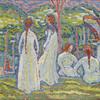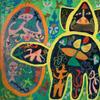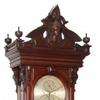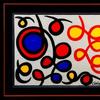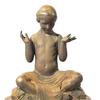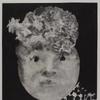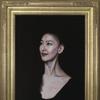New Exhibition to Celebrate American Folk Portraits and the 60th Anniversary of the Abby Aldrich Rockefeller Folk Art Museum to Open There in May 2017
- WILLIAMSBURG, Virginia
- /
- March 27, 2017
Before there were photographs, people in the late 18th-century to the middle 19th-century who wanted images of themselves and their family members commissioned portraits from a broad range of artists, many of whom had little or no academic training. Today, we characterize these types of paintings that fall outside of academic tradition as folk portraiture. These often naïve depictions of individuals, children, families and couples are beloved for their charming characterizations. The world-class assemblage of these portrayals in the Abby Aldrich Rockefeller Folk Art Museum (AARFAM), one of the Art Museums of Colonial Williamsburg, is among the most popular with visitors. The museum celebrates its diamond anniversary in 2017 with We the People: American Folk Portraits, a long-term exhibition of more than 30 portraits which will open on May 6, 2017. The show will highlight new accessions on view for the first time as well as constant favorites.
“Colonial Williamsburg is blessed with one of the nation’s finest and most geographically diverse collections of American folk portraits. With their deeply human qualities, they are in many ways the heart of the Foundation’s folk art collection. It is highly fitting that they be featured in this special anniversary year,” said Ronald L. Hurst, the institution’s Carlisle H. Humelsine chief curator and vice president for collections, conservation, and museums.
Several portraits recently acquired by the AARFAM will be shown in We the People. Among them is an oil-on-canvas, Portrait of Daniel Clarke by Jacob Frymire, an itinerant painter who made this portrait in Franklin County, Pennsylvania, probably in 1791. While the young gentleman depicted has long been identified as Daniel Clarke, his name could refer to several men of the same name and appropriate age who lived in the region where Frymire worked. The well-dressed man, the red drapery behind him and the substantial brick building in the background suggest that either the subject was wealthy or the setting may have been aspirational. Portrait of the Jennison Family by Jefferson Gauntt (1805-1864) is another recently acquired painting to be shown. Gauntt depicts the close connections between the siblings in this strikingly unified composition. Each of the eight children born to the prosperous merchant William Jennison (1795-1866) is portrayed here physically connected or overlapping: a baby in arms, arms around shoulders, hand in hand. The group portrait descended in the family of the young male sitter to the far right of the canvas.
The itinerant artist John James Trumbull Arnold (1812-1865) painted another of the highlighted works to be displayed for the first time in We the People. Portrait of Mary Mattingly, an 1850 painting made in Mt. Savage, Maryland is one of three that the artist painted of this family’s members. Mary Mattingly is of the young daughter of Ellen and Sylvester Mattingly. She never married but lived independently and sold ice cream from her shop in Cumberland, Maryland. On the reverse of this portrait, like many of Arnold’s paintings, is the artist’s fancifully written signature and date; he used the same ornate script on his pen-and-ink self-portrait (also in the Colonial Williamsburg collection). Arnold described himself as a “professor of penmanship,” an occupation which may have predisposed him to a heavy reliance on linear definition of hands and facial features in his portraits.
“The beauty of this exhibition is that it provides us with the platform to exhibit long-term favorite portraits from the collection alongside new acquisitions,” said Laura Pass Barry, Juli Grainger curator of paintings, drawings and sculpture. “We have been fortunate over the past few years to acquire some wonderful examples of the form and we are thankful to the individuals who have helped to make this happen.”
Included in We Are One are several favorites in the collection; one such example is Portrait of Mrs. Seth Wilkinson by The Wilkinson Limner, probably painted between 1827-30 in New York State. Twenty portraits are attributed to the artist who painted Mrs. Seth Wilkinson, and because her likeness was among the first studied and possibly remains the best known, her name was adapted to identify her portrait painter. In this case, “limner” means “painter.” Evidence about The Wilkinson Limner suggests that he began his career as a portraitist while incarcerated at the state prison in Charlestown, Massachusetts. About 1827, he began creating more opulent settings for his sitters, perhaps as a reflection of his newly regained freedom. It is also only fitting that an exhibition celebrating the 60th anniversary of the AARFAM includes a portrait that comes from the Mrs. Rockefeller’s collection. Such is the case with Two Children, an unusual American portrait painted ca. 1810. It is remarkable in several aspects including the placement of the two subjects within the painting’s overall design, which focuses on the children even as the darkened room, open door and temporarily-placed bench or chair in the background creates an air of mystery around them. The children seem to bridge two worlds; their setting seems to imply that they yearn to go outside but cannot.
We the People will not only offer a visual feast but will also debunk common misconceptions about American folk portraits, including whether or not the sitters are actually smiling and are wearing the same or stock clothing or costumes in their depictions. The topics of why subjects often appear with one hand in their coat pocket as well as whether or not the heads were added to pre-painted bodies will also be set straight. Research about many of the sitters and their portrait painters will also be shared throughout the exhibition to offer visitors a sense of who these people were.
We the People: America’s Folk Portraits is generously funded by Don and Elaine Bogus.
American folk portrait admirers are sure to enjoy this splendid array of likenesses both familiar and newly acquired in the AARFAM collection. And, as the museum celebrates its 60th anniversary year, there’s no better time to plan a visit than to see We The People.
About The Art Museums of Colonial Williamsburg
The Art Museums of Colonial Williamsburg include the Abby Aldrich Rockefeller Folk Art Museum and the DeWitt Wallace Decorative Arts Museum. The Abby Aldrich Rockefeller Folk Art Museum is home to the nation’s premier collection of American folk art, with more than 7,000 folk art objects made during the 18th, 19th and 20th centuries. The DeWitt Wallace Decorative Arts Museum exhibits the best in British and American fine and decorative arts from 1670–1840. The Art Museums of Colonial Williamsburg are located at the intersection of Francis and South Henry Streets in Williamsburg, Va., and are entered through the Public Hospital of 1773. Expansion of the museum complex is expected to break ground in 2017. Once completed, the museums’ new entrance will provide improved public access, increased exhibition space and guest services among other enhancements. Museum hours are 10:00 a.m. to 7:00 p.m. daily.
About The Colonial Williamsburg Foundation
Colonial Williamsburg operates the world’s largest living history museum, preserving Virginia’s 18th-century capital as a fully functioning city. Fun, engaging experiences transport guests back in time and highlight the relevance of America’s founding era to contemporary life. The Revolutionary City experience includes more than 500 restored or reconstructed buildings, historic trade shops, renowned museums of decorative arts and folk art, extensive educational outreach programs for students and teachers, lodging, culinary options from historic taverns to casual or elegant dining, the Golden Horseshoe Golf Club featuring 45 holes designed by Robert Trent Jones Sr. and his son Rees Jones, a full-service spa and fitness center managed by Trilogy Spa, pools, retail stores and gardens. Philanthropic support and revenue from admissions, products and hospitality operations sustain Colonial Williamsburg’s educational programs and preservation initiatives.
# # #
Contact:
Robyn LiverantRobyn Liverant Public Relations
robyn@robynliverant.com




